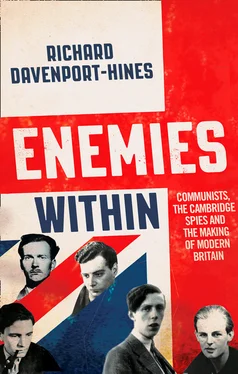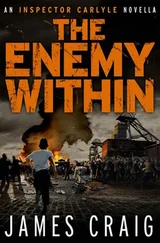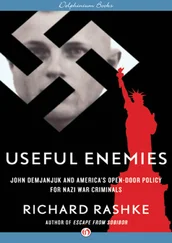Hayes also introduced Ewer to Hubert van Ginhoven and Charles Jane, who held the ranks of inspector and sergeant in Special Branch, and were discreet NUPPO sympathizers. Ewer began paying them £20 a week to report on Special Branch registry cards on suspects, on names and addresses subject to Home Office mail intercept warrants, and on names on watch lists at major ports. They also furnished addresses of intelligence officers and personnel, and gave forewarnings of Special Branch operations. In addition Ginhoven and Jane supplied material enabling Ewer to deduce that communist organizations in foreign capitals were under SIS surveillance, which made it easier to identify SIS officers or agents abroad who were targeting these foreign organizations. Leaks were facilitated by the Special Branch practice of trusting officers with delicate political information. This guileless, unreflecting camaraderie had nothing to do with the old-school-tie outlook or class allegiances (Guy Liddell and Hugh Miller were rare within Special Branch in being privately educated). It was how men at work were expected to behave with one another.
Ginhoven, who worked under the alias of Fletcher within the Ewer–Hayes network, was a familiar visitor to the Special Branch registry, where he flirted with women clerks and snooped when they had gone home. Every week or ten days Ewer dictated an updated list supplied by Ginhoven of addresses for which Home Office warrants had been issued. These were typed in triplicate, with one copy going to Chesham House (the Soviet legation in Belgravia), another to Moscow via Chesham House and the third to the CPGB. It was found in 1929 that traces of Home Office warrants issued for Ewer’s associates, together with any intercepted letters, had vanished from the files at Scotland Yard. So, too, had compromising documents which had been seized during the police raid on CPGB headquarters in 1925.
The Vigilance detectives resembled tugs in the London docks, sturdy and work-worn, speeding hither and thither, but taken for granted and therefore unseen. The material collected by them served as tuition lessons for Soviet Russia in British tradecraft. By watching targeted individuals, Vigilance operatives identified SIS and MI5 headquarters. They shadowed employees from these offices to establish their home addresses. They tracked messengers, secretarial staff and official cars. In 1924 they realized that Kell was MI5’s chief by tracking him from his house at 67 Evelyn Gardens: surveillance was easy, because his address was in Who’s Who and the Post Office London Directory , and his chauffeur-driven car flew a distinctive blue pennant displaying the image of a tortoise with the motto ‘safe but sure’. They watched MI5 and Special Branch methods of monitoring Soviet and CPGB operations, and thus helped the Russians to study and improve the rules of the game. They checked that Ewer and his associates were not being shadowed by the British secret services. They observed embassies and legations in London, and tracked foreign diplomats. Possibly this surveillance led to the recruitment of informants, although no evidence survives of this. Vigilance men monitored employees of ARCOS, CPGB members and Russians living in England who were suspect in Moscow eyes. ‘If a Russian was caught out, invariably he was sent home and shot,’ boasted Ewer’s chief watcher in 1928. 14
Ewer, under the codename HERMAN, was Moscow’s main source in London. He accompanied Nikolai Klyshko to Cheka headquarters in Moscow in 1922, and visited Józef Krasny, Russian rezident in Vienna. He returned to Moscow in 1923 in the company of Andrew Rothstein @ C. M. Roebuck, a fellow founder of the CPGB and London correspondent of the Soviet news agency ROSTA. He also became the lover of Rose Cohen. Born in Poland in 1894, the child of garment-makers, Cohen had been reared in extreme poverty in east London slums. After studying politics and economics, she joined the Labour Research Department, and was a founder member of the CPGB. Harry Pollitt, who became general secretary of the CPGB in 1929, was among the men who became infatuated with this ardent, clever and alluring beauty, whom Ivy Litvinov described as ‘a sort of jüdische rose’. Cohen criss-crossed Europe after 1922 as a London-based Comintern courier and money mule. Eventually she committed herself to a monstrously ugly charmer, Max Petrovsky @ David Lipetz @ Max Goldfarb, a Ukrainian who translated Lenin’s works into Yiddish and went to England, using the alias of Bennett, as Comintern’s liaison with the CPGB. Together Cohen and Petrovsky moved in 1927 to Moscow, where her manners were thought grandiose by other communist expatriates. 15
Ewer returned from Moscow in 1923 with boosted self-esteem and instructions, or the implanted idea, to run his espionage activities under the cover of a news agency. Until then, it had been based in Lakey’s Bloomsbury flat, or later in premises at Leigh-on-Sea: Ewer had met Lakey and other operatives either in cafés or at the Daily Herald offices. Accordingly, in 1923, Ewer leased room 50 in an office building called Outer Temple at 222 The Strand, opposite the Royal Courts of Justice at the west end of Fleet Street. There he opened the London branch of the Federated Press Agency of America, a news service which had been founded in 1919 to report strikes, trade unionism, workers’ militancy and radical activism. The FPA issued twice-weekly bulletins of news, comment and data to its left-wing subscribers. It was based first in Chicago, shifted its offices to Detroit and then Washington, before settling in New York. The FPA had developed reciprocal relations with socialist, communist and trade union newspapers internationally and acted as an information clearing-house in the United States and Europe. It may have served broad Comintern interests, but was not a front organization for Moscow. According to Ewer, the only American in the FPA who knew that its London office operated as a cover for Russian spying was its managing editor, Carl Haessler, a pre-war Rhodes scholar at Oxford.
Moscow sometimes sent money to Haessler in New York, who remitted funds either to the communist bookshop-owner Eva Reckitt in London or to the Paris correspondent of the Daily Herald , George Slocombe. Usually dollars arrived in the diplomatic bag at Chesham House and were distributed to the FPA and the CPGB by Khristian Rakovsky, Soviet plenipotentiary in London from 1923 and Ambassador from 1925. An associate of Ewer’s named Walter Holmes (sometime Moscow correspondent of the Daily Herald ) converted the dollars into sterling by exchanging small amounts at travel agencies and currency bureaux. These arrangements ended after the ARCOS raid in 1927.
For a time Ewer had a source in Indian Political Intelligence (IPI), who was dropped because the product was suspected of being phoney. Ewer had a sub-source in the Foreign Office, who reported confidential remarks made by two officials, Sir Arthur Willert of the Press Department and J. D. Gregory of the Northern Department; but his network never obtained original FO documents which could be sent to Moscow for verification. Probably the remitted material from the Foreign Office and India Office was limited to low-grade gossip. Don Gregory, the Office’s in-house Russian expert until 1928, enjoyed his half-hour briefings with Ewer, whose facetious anti-semitism amused him: ‘he is an admirable and loyal friend, though I have heard him described as a dangerous bolshevik’. The only diplomatic documents obtained by Ewer’s network came from his second prong in Paris, where his sub-agent was the Daily Herald correspondent George Slocombe. 16
Slocombe had been born in 1894, and grew up in the semi-industrial northern districts of Bristol called Horfield and Bishopston. He was baptized in a Wesleyan Methodist chapel. His father was a commercial traveller (who left an estate worth only £268 in 1929). He attended the Merchant Adventurers’ Technical College at Bristol, where his best friend was a lively peasant boy from Touraine on a government scholarship. In July 1909, aged fifteen, Slocombe was appointed as a boy clerk in the Post Office Savings Bank, behind London’s Olympia, which had recently been converted from a hippodrome into an exhibition centre for motor-cars and furnishings. According to the 1911 census, he lived nearby at 63 West Kensington Mansions, as a friend rather than a lodger, with Emma Karlinsky, who had come to England from the Crimea in 1909 with her two daughters, Fanny and Marie. Her husband Joseph was an attorney at Yalta and business adviser to a grand duke.
Читать дальше












